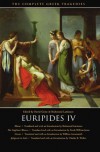Currently reading
The Huns , by E.A. Thompson


Anthony Quinn as Attila wearing surely the most absurd helmet in the history of cheapo film productions.
The nation of the Huns, scarcely known to ancient documents, dwelt beyond the Maeotic marshes beside the frozen ocean, and surpassed every extreme of ferocity.
- Ammianus Marcellinus
Attila the Hun! Is there any name more evocative of barbarian hordes looting, burning and murdering their way through civilization except possibly Genghis Khan's?
In the final, thirty-first book of Ammianus Marcellinus' magnificent history of the late Roman Empire is to be found the earliest extant source on the customs of the Turkic nomads called the Huns. Since the Huns were little more than bogey men to me, I thought it was time to see what one knows about them.
Precious little, as it turns out. They were illiterate nomads leaving behind them no written and a very thin and quite controversial archaeological record. When their empire collapsed soon after Attila's death, they disappeared from history. What one knows about the Huns now is due to the reports of their victims, curious travellers and a few diplomats. E.A. Thompson collected what he could in order to write what still appears to be one of the most important books on the topic. Though the very readable A History of Attila and the Huns appeared in 1948, a thorough updating by Peter Heather as The Huns (1996) changed little in the text. Other books concerning the Huns appeared in the meanwhile, but according to Heather these differ from Thompson's text primarily by purporting to describe the activities of the Huns before and after the contact with the Roman Empire. And until his death in 1994 Thompson doubted the reliability of the sources for those efforts.(*)
So this book is about the Huns at the fringes of the Roman Empire between c. 370 and c. 470 CE., and much of it must be taken cum grano salis since the author has so little to work with. Some things are rather certain, however. Around 376 the Huns' westward migration pressured the Goths to move from north of the Danube River and what is now Ukraine and Romania into the Roman Empire, where, due to the arrogance and incompetence of Emperor Valens and some of his lackeys, it soon came to open warfare (this is all described well in Marcellinus' Book XXXI, as is Valens' ignominious death; a fine modern account is to be found in Michael Kulikowski's Rome's Gothic Wars).
Some bands of Huns participated in that fateful battle outside Adrianopolis, but in the winter of 395 the Danube froze and the Huns came over in force. Simultaneously they overrode Armenia, much of Asia Minor and even Antioch was threatened. In 406 swarms of Vandals, Sueves, Burgundians and Alans were pushed by the Huns across the Rhine after fierce battles, placing another nail in the coffin of Celto-Roman Gaul. Constant Hun raids into the lower Danube motivated the completion of the Theodosian walls around Constantinople in 413.
The Romans, Germans and Huns all formed alliances with each other against the third, but the ferocity of the Huns was telling. For example, a large force of Huns stopped the Visigoth Alaric from marching on Rome in 409, and the Romans induced bands of Huns to massacre the Burgundians in 437.(**) Hun mercenaries were even used by the Romans against each other during the civil wars that ensued at the death of each emperor. For a few decades a certain equilibrium was established, temporarily.
Though the exact nature of the social and political organization of the Huns before Attila is not clear (Thompson asserts they were quite loosely organized; Maenchen-Helfen doesn't agree), in 434 Attila, together with his elder brother Bleda, acceded to the military command of a confederation of Huns which had been put together somehow by their uncle, Rua. Their first act was to extort a huge yearly tribute from the Eastern Empire, which was unhappily occupied with the Vandals in North Africa.
The unanimous reports that the Huns didn't get off their horses to eat, excrete or sleep are striking; the lengthy negotiations leading to the just-mentioned Peace of Margus were held on horseback. According to the Roman witnesses, the Huns spent so much time on their horses that their walk was clumsy and unsure. Their inbred horsemanship, along with a compound bow and the speed at which they maneuvered, gave them a military advantage that the Romans and Germans found difficult to overcome.
So every time Attila campaigned against Rome (he killed his brother in 445), either in the East or the West, he triumphed. We have some reasonably complete details about these campaigns, though had the quite engaging books of Priscus (Priskos), a Greco-Roman who spent time as a diplomat at Attila's court, survived intact, we would know a great deal more. Attila finally suffered a few defeats when Marcian became Emperor in the East, but only Attila's curious death (supposedly he had a nose bleed while dead drunk and suffocated) in 453 saved the Empire's bacon. Attila's sons were soon warring among themselves; the many peoples who had been suffering under the Hun's rule seized the opportunity and swept the weakened Huns away in relatively short order. The next wave of Asian nomads, the Avars, then finished the job. The Huns disappeared from History's view unlamented.
(*) An incomplete text by Otto Maenchen-Helfen (The World of the Huns) is able to provide another interpretation of the surviving texts concerning the Huns due to the paucity, incompleteness and mutual inconsistency of the ancient sources. I'll mention that recent archaeological finds are acquiring more coherence and thus significance than was the case 60 years ago.
(**) This formed the historical basis of the Nibelungen legend.
 4
4












